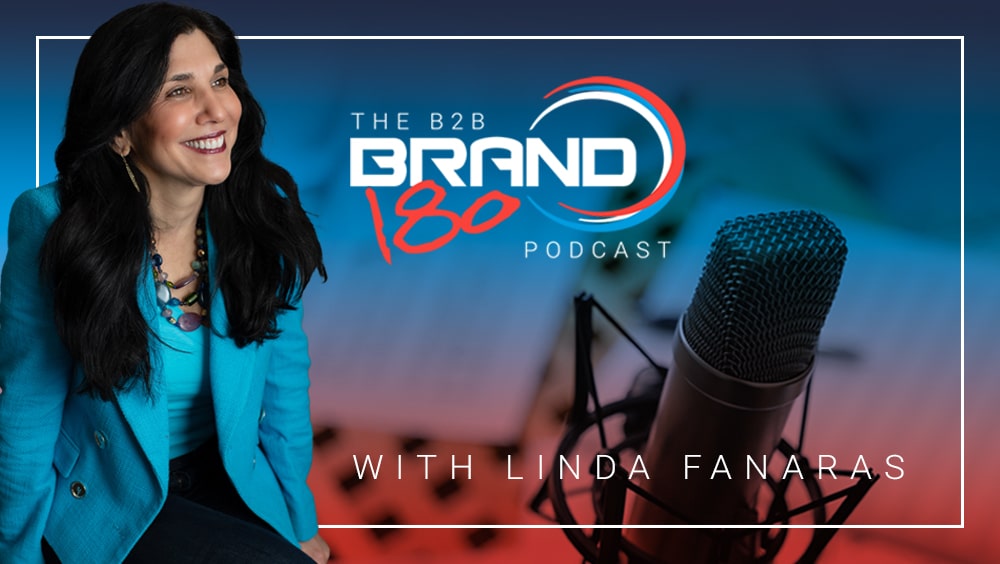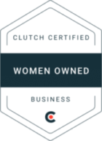In this episode of The B2B BRAND180 podcast, Sarah Noel Block, CEO of Tiny Marketing, shares key tips to guide SaaS companies on their content marketing journey. Sarah focuses on organic marketing and believes that all marketing is content marketing. She provides actionable tips on how to create a content marketing strategy when time and budget are limited. Thanks for listening to the B2B BRAND180 Strategy podcast with Linda Fanaras, CEO/Strategist at Millennium Agency.
Sarah’s LinkedIn profile:
https://www.linkedin.com/in/sarahnoelblock
Sarah’s personal website:
https://www.sarahnoelblock.com/
Content Marketing Webinar
https://my.demio.com/ref/9dg1Ajo5O1selfYW
Linda Fanaras:
If you want to transform your B2B marketing into a powerhouse brand, then you may want to listen in. And if you like what you heard today, click like, share, or subscribe. Hi, I’m Linda Fanaras, CEO of Millennium Agency, and I’m your host today and excited to bring Sarah Noel Block, founder and CEO of Tiny Marketing, and she’ll be talking about optimizing content marketing. Sarah will share some key tips to guide SaaS companies on the right path toward their content marketing journey. As one of the most powerful marketing strategies SaaS companies should really learn how and where to start, and along with the right actions to leverage the potential of content and expand its reach. Let’s get to it. Hi, Sarah. Welcome to B2B Brand 180 podcast. Thanks for joining me today.
Sarah Noel Block:
Thanks for having me.
Linda Fanaras:
So, I’m looking forward to hearing about your SaaS content marketing strategies and insights, and how it can really help transform the content marketing journey specifically for B2B companies. So, let’s start out with a quick introduction. Sarah, tell us a little bit about yourself and what you do.
Sarah Noel Block:
Yeah, so I work with SMBs to help them streamline their marketing and develop systems that work with even really tiny marketing departments. I focus on organic marketing, so content marketing is key. I think it’s Seth Godin that says that all marketing is content marketing, and I completely agree with that.
Linda Fanaras:
That’s a great point actually. So how, when you talk about content strategies and, and helping these companies, how do you go about it? How do you better understand that ideal customer that, you know, clients are actually looking for?
Sarah Noel Block:
The first thing I do is have a kickoff call with all of the stakeholders involved in the company because they know better than anybody else who they’re targeting, especially the sales team and client-facing people. They need to be on that stakeholder call. So first I’ll talk to them and then I’ll make sure to interview their actual customers. So many people are afraid of having these conversations with their customers, but nobody knows what their pain points are, what they’re seeking out of a solution more than the customer. So, first thing I do is I put out a very comprehensive survey, send that to their whole customer list, and then I have a conversation with at least three of their customers, one-on-one, so I can dig deep into it.
Linda Fanaras:
That’s great. That really probably uncovers a lot of the pain points that maybe you wouldn’t necessarily figure out on your own. So, it’s great to get that customer feedback. I’m sure there’s surprises that come up during that journey as well.
Sarah Noel Block:
Oh my gosh, yes.
Linda Fanaras:
I can only imagine. So, once you speak to the ideal customer and get the survey back in and then analyze the data, then what is your process to build those content themes that your customers actually care about? Like how do you tie those two things together?
Sarah Noel Block:
Yeah, so I think of it like a Venn diagram. There are the services that you offer, and then there are the problems that they have, and where that meets in the middle, that’s where your content themes lie. So, I always recommend pick about four overall content themes that you’ll create around, and that should be what you talk about. Those are the problems you solve, and really focusing in on that across all channels. A lot of times, yeah, people mess up by talking about too many things and then they’re known for nothing. So, having those content themes keeps you in a good box, where you’re not floating around and talking about everything. So, you become known for this expertise.
Linda Fanaras:
When you talk about those content themes, are you looking at pain points? What would be a good example of a content theme from your perspective?
Sarah Noel Block:
A content theme for myself, for example, might be, like, I talk to one person marketing departments, solo entrepreneurs and small businesses that have no marketing departments. So, one of those might be how to, work through – how to really market when you’re really time constrained and you don’t really have a budget. So, everything is through that lens. And then how can that be solved? So, I’ll talk about repurposing, for example, within content marketing. So, we can talk about how you can get the most with the littlest amount of output, the littlest amount of output on time, and the littlest amount of output in budget, because it really lies in what that pain point is for them and what my service is.
Linda Fanaras:
I think that’s a good point because what happens is during the process is, I find that clients like to talk about a lot of different things and then it does get very confusing. And when you’re done reading something, you don’t really have a clear understanding of what they’re really getting at. So, I think having one key focus area, to have that theme helps really push that message out in a more effective way. So, I do like what you’re talking about there. You know, companies also talk about a brand voice. I love talking about this because I think every company has their own brand voice and they may not know exactly what, what does that mean? What do you mean a brand voice, and why does that matter? Like we’re who we are. So how do you tie in that brand voice with the actual content? You know, I know some companies think they’re funny or others are super academic. How do you tie in that brand voice, and what would be some examples of actually putting that into action?
Sarah Noel Block:
Yeah, so when I’m building a content strategy for a client, one of the things I do is I have this one sheeter that is the client voice. It includes words they would say, words they wouldn’t say, how they want someone to feel after interacting with them, their tone, examples that showcase their voice really well, and it matters because your brand is a personality and content marketing is all about building that Know Like Trust factor. And if you sound like a different person every time you’re posting on social media or on an email, it’s like, well, who are you? Especially when you’re working with contractors to fulfill that content. It can get really convoluted, but you need to be a personality, your brand needs to be a personality. And having that one sheeter that you can hand off to any of your contractors, that makes it a lot easier and makes sure that you’re – you sound like the same person across all channels, no matter who’s writing.
Linda Fanaras:
I think that’s a great point because when we go through our brand strategy process with our clients, we have to really distill who they are, and sometimes they don’t really know unless they go through that process to figure out, okay, well as much as I’d love to be this, you know, fun, crazy company, that’s really not how we are built. That’s not who we are. So, we’re more professional. And then tying in the way you speak with who you are can really make a difference. It starts to tie all the pieces together in a much more effective.
Sarah Noel Block:
Yeah. Speaking of that, you’d want that brand voice to tie to any external people that are client facing, so that voice comes across no matter who’s saying it.
Linda Fanaras:
Exactly. So, it’s very, very consistent and I’m, you know, I’m assuming like we put it into our brand and messaging architecture guidelines as really like who are we? What’s our personality, how do we speak, so on and so forth. And from that you can really start to have a voice that is used across all the mediums that you choose to use. So yeah, I definitely like that. And I think that’s a big oversight by a lot of companies. It’s like, let’s try this. Let’s try that. Well, you have to decide who you are first before you go down that direction.
Sarah Noel Block:
Yeah, there’s that and a lot of times they don’t tie it to customer service or sales, people that are interacting with the customers. They need to follow those brand guidelines too.
Linda Fanaras:
Yeah exactly. So how do you actually get the most from content, when you have a small team that you’re working with, how do you handle that?
Sarah Noel Block:
Yeah, so I usually, when I’m working with SaaS companies, they’re usually coming to me at the very beginning when it’s like a founder and one other person, and they need to figure out how to really build out their brand when their brand spanking new and don’t have the budget. So, I always recommend creating this core piece of content. What is something that you can commit to doing once a quarter, once a month, once a week, whatever it may be. What is that one thing that you can commit to doing? And then take a look at that core piece of content and how can you repurpose it in as many ways as possible? So, I recently did a podcast episode where I broke down how you could take one 60-minute interview with an influencer or a subject matter expert and then turn it into 64 net new pieces of content. So you’re not like restating the same exact thing over and over again, you’re just using it as your foundation for your content for the quarter. You’re showing up every single weekday with new content, but it’s not going to take you a million hours to do.
Linda Fanaras:
Oh, that’s great. So, what would be an example of grabbing 64 pieces of content? Are we talking about social content? Are we talking about writing blogs from that?
Sarah Noel Block:
All of that.
Linda Fanaras:
All of that?
Sarah Noel Block:
You can take that one influencer interview and repurpose it into weekly newsletters. You can turn it into blog posts. Podcast episodes. You can break down that video into shorts and clips for YouTube. There are so many different things that you can do with it. You can even compile a couple of those and turn it into a new e-book if you were talking about a certain theme. So many things you could do. It was episode 27.
Linda Fanaras:
Okay. Okay, fantastic. No, that’s great for the audience to know. How do you work with your, you know, clients on tying in their content with their SEO goals? Do you have strategies in place to help them with that?
Sarah Noel Block:
Yeah, I try and make it as simple as possible. I use Ubersuggest to track their SEO and where they’re at. And Ubersuggest is nice because it also shows me the low hanging fruit. What are the easiest keywords that they could rank for number one quickly? And I’ll focus on those first, so we can get those easy wins. And then Google Search Console. It has content ideas in beta right now. Yeah. So, if Google is telling you, “Hey, you could rank for this pretty easily,” then listen.
Linda Fanaras:
Yeah, yeah, exactly. Yeah. So, you use those as tools and that, that’s probably a good thing for the audience to know as well as Ubersuggest. And also, the Google Search Console would be two great resources and tools to share that they can use to improve their SEO if they’re hoping to do that with their content. So, I like that idea. I think that’s fantastic. Now, you must have, I mean obviously you’ve created a lot of resources. Are there any resources that you can talk about that you might be able to share with the audience as well?
Sarah Noel Block:
Yeah, so I will share this with you to put on the show notes page, but I have an on-demand webinar, “Five Ways to Increase Your Content Marketing ROI.” So, what I do is I break down one of my actual clients, how much they spent on content marketing, and what we were able to actually create lead-wise, how much money they actually made from content marketing, I show you my whole process with real numbers in there, so I’ll share that with your audience.
Linda Fanaras:
I think that’s great. Can you provide some initial tips before they jump into something like that? Just curious, like how you would. you know, help them. I know you do your discovery, I know, you uncover the keywords. I know you build out multiple sets of themes and content blocks. Are there, and then you obviously have to set up the analytics to track that back, I would assume.
Sarah Noel Block:
Yeah. I use Google Data Studio for that to create a dashboard for it. I usually start working with my clients with a messaging and content strategy so we can have the foundation there and that’s when we figure out your customer avatars, your brand voice, your content themes, how you should be talking to your customers, what words they use to describe you. We dive real deep and that’s the foundation. And then from there we have quarterly content planning, build out exactly what makes sense to create that quarter, and then some clients work with me on a monthly basis for execution on that.
Linda Fanaras:
That’s awesome. So, do you have any other tips that you can share with the audience on SaaS content strategies?
Sarah Noel Block:
Yeah, SaaS? Work with partners. I have a few SaaS partners that I work with as a service provider. They’re a product. We have the same audience, so it makes sense to collaborate with them because you share the same audience and you’re basically doubling, if not tripling the amount of people who know who you are. So especially when you’re a startup, partnerships are key.
Linda Fanaras:
No, that’s a great idea because, like you said, you’re leveraging the same audience and if you could build a strong partnership program and a lot – or a strong partnership – and I know a lot of these technology firms have these fantastic partnership programs, and if you can get ranked and become top of mind, it’s a great way to generate leads and generate a referral system for yourself. So I like that idea.
Sarah Noel Block:
I mean, referrals and affiliates are great, but also doing these partnerships in content marketing is, like, key.
Linda Fanaras:
Valuable. Yeah. No, that’s great. That’s awesome. How about any other tips that you’d like to share today on content marketing, especially on the B2B side? What other good takeaways would be great for our audience to hear?
Sarah Noel Block:
I would say consistency is key. When you show up regularly and people can rely on you to be the teacher and teach them how to solve their problem, that’s when you – the leads become easy. They’re coming to you. You don’t have to do any cold outreach. You don’t have to do any outreach at all because you’ve built your reputation as an educator, as someone who knows what you’re talking about, you know how to solve their problem, and the leads will come to you. So consistently showing up and educating, teaching, being selfless, it comes back. It’s like good karma.
Linda Fanaras:
Yeah, you helped somebody and then guess what? It comes back in all kinds of ways. Sarah, it was great to get a lot of those tips and I think that they’ll find some value in this on how to build out a really solid content strategy.
Sarah Noel Block:
Yeah. So, I will share the “Five Ways to Increase Your Content Marketing ROI” on-demand webinar link with you so you can share it on the show notes page. And, um, also anyone who’s listening, if you want to check out my podcast, it’s the Tiny Marketing show everywhere you listen to podcasts and also on YouTube.
Linda Fanaras:
That’s fantastic. Well, let me thank Sarah today, founder and CEO of Tiny Marketing, while she provided all kinds of great key tips to guide these SaaS companies on the right path toward their content marketing journey. Thank you for joining us on Brand 180 Podcast. If you like what you heard, press like, share, or subscribe today.





























